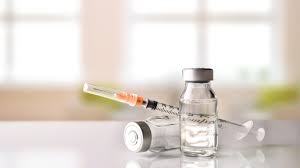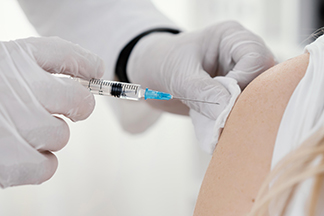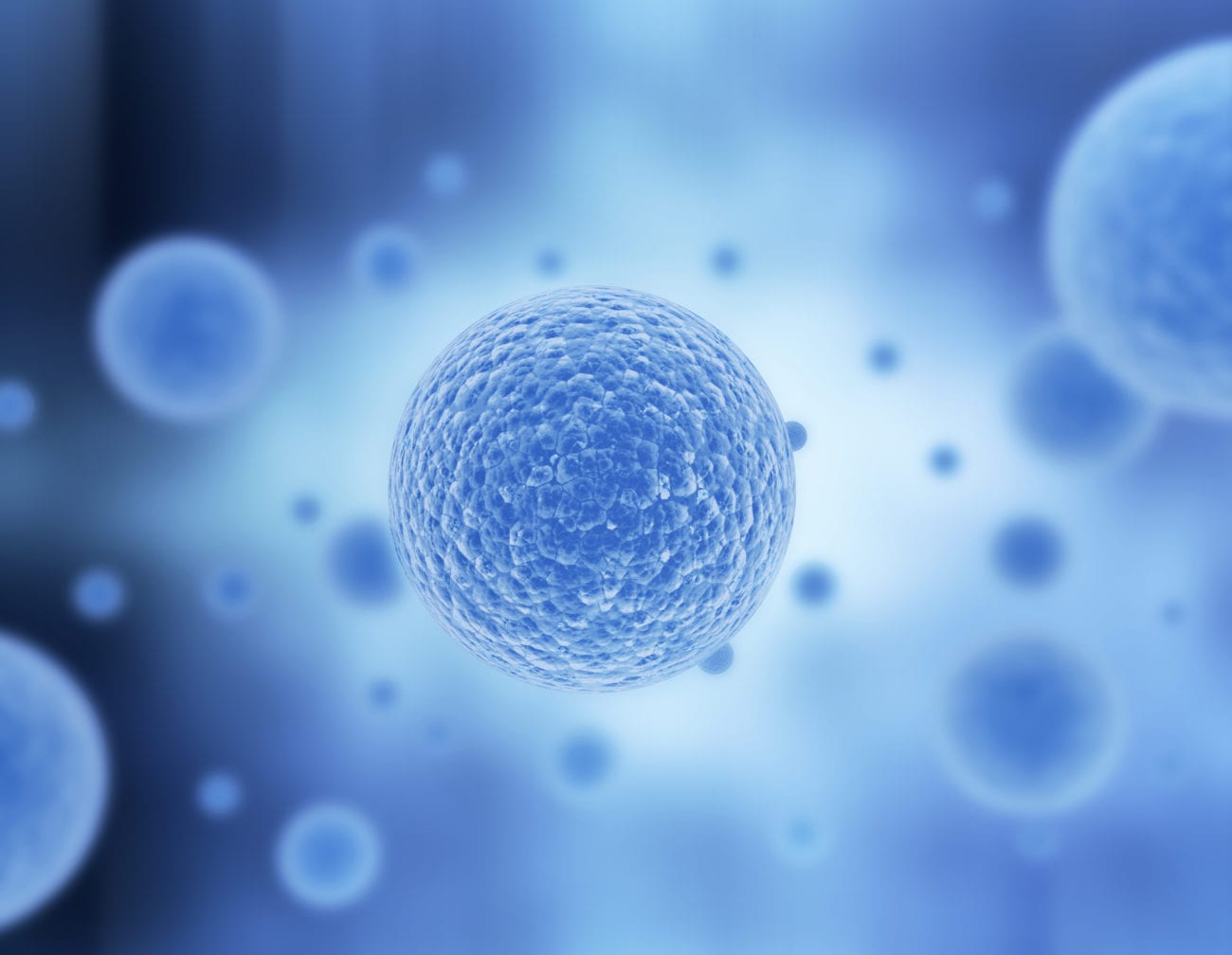Growth Factor Therapy
“Natural Healing With Healthy And Ethical Donor Tissue”
Welcome to Stem Cell Therapy Pro, where we provide cutting-edge growth factor therapy for a wide range of conditions. Our advanced treatments aim to stimulate the body’s natural healing process and promote tissue regeneration.

Use The Body’s Growth Factors As Regenerative Medicine.
Heal wounds, chronic pain and degenerative diseases.
Are you suffering from these conditions?
- Arthritis
- Tendinitis
- Cartilage defects
- Back and neck pain
- Carpal Tunnel Syndrome
- Knee ligament injuries
- Plantar Fasciitis
- Sacroiliac joint pain
- Tennis elbow
Amniotic Allograft
Human Amniotic Fluid Allograft is an acellular product used for a variety of purposes. It is used for degenerative orthopedic conditions such as chronic wounds and acute sports injuries.
Great For Patients:
Treatment provides patients with an alternative to steroid injections. It is also an alternative to surgery and other invasive methods. It enhances your body’s ability to heal independently while reducing and aleviating pain.
What’s In The Mix?
Amniotic fluid is rich in many nutrients. It contains hundreds of growth factors, cytokines and proteins. The fluid is used to regenerate damaged tissues which in turn start the healing process.
Where Does It Come From?
Amniotic fluid products come from one of the oldest FDA banks. The fluid is tested and approved before being used on patients.
Volunteer doners go through an extensive pre-screening process for all FDA required diseases. Amniotic fluid is collected during qualified full-term live Caesarean births.
What Does It Provide?
Amniotic Fluid Allograft addresses acute inflammation and long-term degeneration issues. Furthermore, this leads to fewer cases that go on to surgery and more cases that return to full function (normal daily activities).
Benefits of Amniotic Allograft Therapy
Amniotic tissue therapy represents one of the most exciting advancements in regenerative medicine today. Through plenty of research, we have discovered that amniotic tissue offers a number of benefits that make it an excellent option for treating things such as tendinitis, plantar fasciitis, soft tissue injuries, and repetitive motion injuries.
Here are the eight benefits of amniotic tissue therapy to consider:
-
Growth Factors in Amniotic Tissue
Amniotic tissue contains a cornucopia of growth factors that promote the regeneration of tissue in damaged areas of the body. Growth factors are key to regenerative medicine in that they replace damaged tissue instead of simply masking pain.
-
It Is Collagen-Rich
As you already know, collagen ranks as one of the most abundant proteins in the human body. It is responsible for binding tissues together. Amniotic tissue is rich and collagen, so it can be used effectively to treat diseases and injuries to bone, muscle, tendons, and even skin.
-
It Contains Other Proteins
The human body requires more than collagen to recover from injuries and wounds.
Amniotic tissue is up to the task!
It contains the full compendium of proteins necessary to maintain the baby in the womb. Those same proteins can be harnessed for regenerative medicine.
-
It Is Antimicrobial
Amniotic tissue’s antimicrobial properties are extremely helpful for regenerative medicine.
Antimicrobial properties prevent the growth of microorganisms and, in cases where such microorganisms already exist, eliminate them.
This significantly reduces the risks associated with other treatments for wound recovery and chronic pain.
5.
It Is Anti-Inflammatory
When patients undergo invasive proceedures, inflamation is a problem.
Not only is amniotic tissue therapy less invasive but it is also less likely to lead to inflammation thanks to the anti-inflammatory properties of amniotic tissue.
In fact, amniotic tissue can prevent inflammation rather than just reducing it.
-
It Is Immune Privileged
Just as certain sites in the body can tolerate the introduction of antigens without inflammation, amniotic tissue can be injected into the site of injury or wound without inciting inflammation. In that sense, amniotic tissue is immune privileged. Immune privilege is the primary reason amniotic tissue is also anti-inflammatory.
-
It Is Chorion-Free
The amniotic fluid allografts recommended by Apex Biologics contained no chorion. Therefore, the risk of adverse reactions to amniotic tissue among patients is reduced. Allografts that do contain chorion could potentially contain maternal antigens as well.
-
Procedures Are Less Painful
As with all regenerative medicine procedures, amniotic tissue procedures are significantly less painful than invasive surgeries. Procedures are conducted using the least invasive injections possible, reducing immediate pain and discomfort as well as long-term pain caused by inflammation.
What is Growth Factor Therapy?
Growth factor therapy is a revolutionary medical approach. It utilizes naturally occurring proteins called growth factors to enhance the body’s healing capabilities. These growth factors are a crucial role in cell to cell communication. They are responsible for initiating tissue repair and regeneration.
Advantages of Growth Factor Therapy
Growth factor therapy uses the body’s own cells to promote natural healing while reducing the need of artificial agents.
Additional benefits include:
- Reduces discomfort and disabilities.
- Minimal side effects.
- Therapy is combined with other treatments.
- Accelerated Healing: By harnessing the body’s natural growth factors, this therapy accelerates the healing process, leading to faster recovery and reduced downtime.
- Tissue Regeneration: Growth factor therapy promotes the regeneration of damaged tissues, allowing for the restoration of normal structure and function.
- Non-Surgical Approach: Unlike invasive surgical procedures, growth factor therapy is minimally invasive and does not require extensive recovery periods or leave visible scars.
Why I Should Consider Growth Factor Therapy ?
Growth factor therapy is delivered by injection and has given some patients up to two or more years of relief from their arthritic pain. Only one or two days of recovery time are needed following the injection. Results have been felt in as little as a week and most patients only need one round of treatment for prolonged relief. Around 80% of our patients respond in a positive manner to growth factor therapy.
Exosomes
What Are They?
Exosomes are extracellular vesicles (particles that release naturally from a cell and cannot replicate). They are responsible for passing certain genetic information. This is known as Exosomes cell to cell communication.
Exosomes transport molecules that are essential regulators of intracellular information. The perform this task between close and distant cells.
What Role Do They Play?
Exosomes are a vital role when considering the communication and rejuvenation of all cells in our body.
Despite not being a cell, Exosomes are important in maintaining a healthy cellular terrain.
How Are They Made?
Exosomes are made by growing stem cells in culture.
Next the media where they grow is taken and stem cells are removed.
Finally, media is then ultra-centrifuged which concentrates the exosomes.
What Are They Made Up Of?
Exosomes contain proteins and RNA. These are different molecular constituents compared to the cell origin.
Exosomal protein composition varies with the cell and tissue of the origin.
Specific Exsomes contain a common set of protein molecules.
What Does The Research Say?
Exosome therapy is a hot topic of regenerative medicine treatment.
Research gives the valuable insight into the functionality of exosomes. Stem cells are responsible for the rejuvenation of older cells. This being said, stem cells are not always able to supply the information needed
As a result, supporting Exosome function will have a positive effect. This is achieved by providing new information that enhances the healing process.
What Is Therapy Like?
Exosome therapy is a minimally invasive procedure. It is used in orthopedic injuries, anti-aging treatments and other degenerative diseases. Exosome treatment contains growth factors such as messenger RNA, micro RNA, cytokines and other biologically active molecules. This combination allows us to speed up the healing benefit.
Dosing size varies and there are no set protocols.
Exosomes treatment is gaining popularity because of the ability to transfer molecules from one cell to another. This allows for the Exosomes to influence the immune system including “dendrite” and “B” cells.
Types of Growth Factors
Epidermal growth factor (EGF):
EGF are cells that build collagen and stimulate the growth of fibroblasts.
Keratinocyte growth factor (KGF)
KGF promotes the growth of keratinocytes, which secrete keratin (a protein).
Vascular endothelial growth factor (VEGF)
VEGF encourages the growth of new blood vessels (angiogenesis).
Transforming growth factors (TGF)
TGF creates the necessary supply of blood flow to a healing wound and promotes new blood vessel growth.
Platelet-derived growth factor (PDGF)
PDGF attracts fibroblasts and macrophages to injured areas of tissue.
Start your Journey With Our Medical Professionals Today!
At Stem Cell Therapy Pro, we are committed to providing the highest quality care and the latest advancements in growth factor therapy. Our experienced team of medical professionals will assess your condition and develop a personalized treatment plan to suit your specific needs.
We prioritize your comfort and safety throughout the treatment process, ensuring a positive experience and optimal outcomes. Our goal is to help you regain your health, mobility, and overall well-being using the power of growth factor therapy.
Contact us today to schedule a consultation and discover how growth factor therapy can benefit you.
Learn About Our Services
Stem Cell Therapy
Stem cell therapy is the use of stem cells to solve issues in the human body that are caused by cell degeneration or celular malfunction.
Platelet Rich Plasma
Platelet-rich plasma (PRP) therapy accelerates the healing of injured tendons, ligaments, muscles and joints.

IV Nutritional Therapy
IV Therapy consists of delivering nutrients and hydration directly into the bloodstream for immediate absorption and use by the body.

Bioidentical Hormone Replacement
BHRT is used to treat men and women who experience a drop or imbalance in their hormone levels.

Growth Factor Therapy
Growth factor therapy is a regenerative medicine. It promotes healing wounds, chronic pain and degenerative diseases.

Peptide Therapy
Peptide therapy is used to stimulate cellular regrowth systems.

TA-65-Telomere Therapy
TA-65 is a patented, all natural, plant-based compound. It maintains or rebuilds telomeres that diminish as people age.

Pain Relief Injections
Pain relief Injections are a nonsurgical treatment option used for acute and chronic pain.
